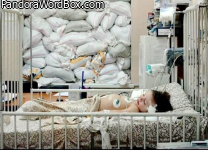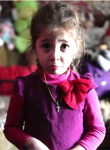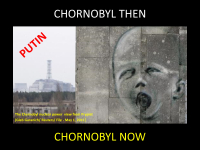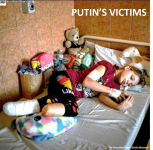Our websites offer information mostly for educational purposes with no intent to alter health care protocols nor to serve as a sole source of medical information.
Always seek the advice of your local health care provider.
|
× UKRAINIAN CHILDREN WITH DISABILITIES HAVE SPECIAL NEEDS |
COUGH
Pertussis
Tos Convulsa Whooping Cough
Preconception Health
"Cough" is a universal recognizable symptom and sign, generally indicative of bronchitis. It is very peculiar that major dictionaries and reference sources offer meager information about the roots and inherent ideas of this word. In essence, "cough" denotes a sudden noisy burst of expelled pulmonary air. The similarity of "toss-tos" is provocative. Experts do not link "Toss" with "Tos" which in Spanish denotes cough. Nonetheless, toss is related to ideas of "throw" or "heave" as is cough or "Tos".
From "Tos" we get to "Tussis", the Latin term for cough and from "Tussis" we get to "Pertussis". This highly contagious disease is caused by Bordetella Pertussis, so named after Jules Bordet, who discovered the bacterium. After an incubation period (bacterial colonization) of nearly two weeks associated with flu-like symptoms (unlikely to be treated with antibiotics), a period of convulsive cough follows which may last two or more weeks. A third phase is recovery which may be rather long. The severity of the disease is much grater in infants and decreases with maturation. In infants and children, Pertussis is an important cause of mortality. In adults, Pertussis may manifest as a chronic cough and often is not diagosed. Of particular concern are expecting mothers and "mothers-to-be" harboring Pertussis. The majority of infants who died from Pertussis, acquired the disease of a parent. The severity of cough attacks in children are conveyed by the vernacular terms "Whooping cough" or in Spanish, "Tos convulsa". An typical attack consists of an un-interrupted spasmodic violent explosive series of expulsions of pulmonary air rendering the victim breathless, pale and even cyanotic (blue). The convulsive breathless coughing attacks end with a violent inspiration of air causing a sound described as "whoopoing". To reduce childhood mortality, "Mothers-to-Be" and whole households should be free from Pertussis. Furthermore, prospective parents should consider being immunized before conception takes place. Such steps will protect them, their children and an "Infant-to-Be". An infant born without the protection of maternal antibodies is at risk until vaccinated which currently does not occur before the age of two years and generally later. The best protection for young chidlren remains avoiding their exposure to infected persons. Pertussis is very contatagious. Those who already are parents and all those who are at risk or plan to become parents, have to consider the above points.
The public is well aware of the acronym DPT for diphtheria, pertussis and tetanus antigen containing vaccines. However, the public is not fully aware that this is not a matter solely concerned with "permission for kids to attend school". This is a matter of having "healthy children" in the broadest sense of the word parents and "Parents-to-Be" must devote their own efforts to avoid being a source of deadly risks to those who depend on them.
Readers interested in more information about how to prevent "birth defects" in "Babies-to-Be", may find the following link helpful.










